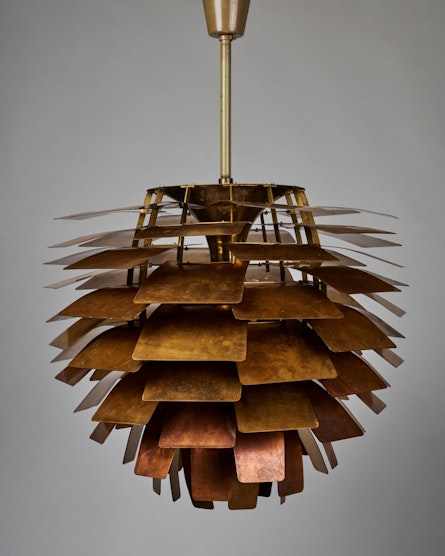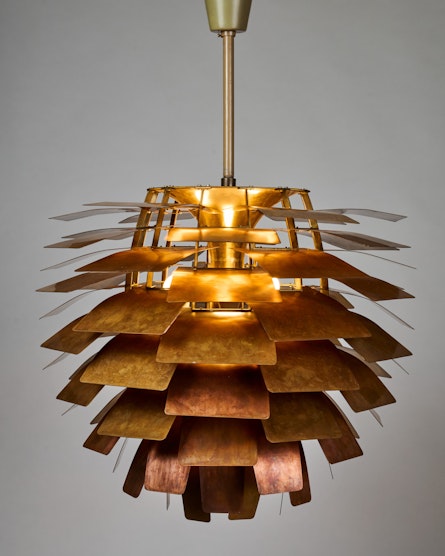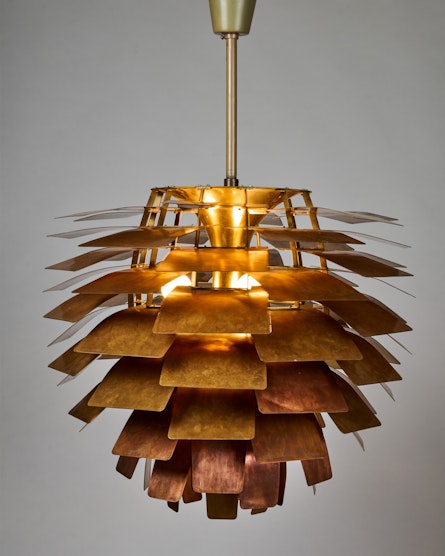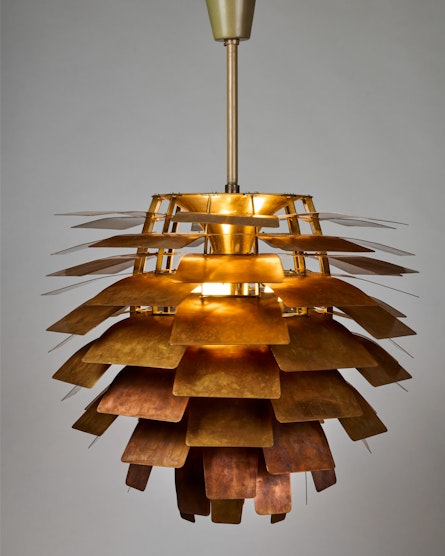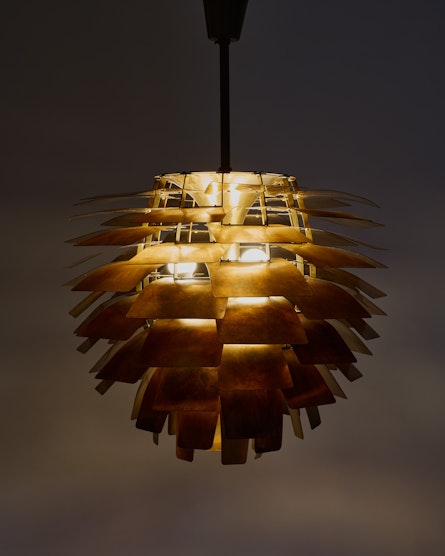Ceiling lamp 'Artichoke'Designed by Poul Henningsen for Valaistustyö OyFinland, 1950s
Reference number: 8638
Tear sheet: Download
Material:
Brass
Measurements:
H (total): 99 cm / 3' 2 15/16"
H (fixture): 63 cm / 2' 0 13/16"
L (pole): 36 cm / 1' 2 3/16"
Dia: 66 cm / 2' 1 15/16"
H (fixture): 63 cm / 2' 0 13/16"
L (pole): 36 cm / 1' 2 3/16"
Dia: 66 cm / 2' 1 15/16"
On display at our London gallery
Description:
Tradition holds that this extraordinary lamp was a unique commission executed through Artek at the request of Eino Mäkinen. As both a close collaborator of Aalto and a shareholder in the company, Mäkinen was ideally positioned to secure such a special project. The lamp was manufactured by Valaistustyö Oy, one of Finland’s foremost lighting workshops of the period.
During the mid-20th century, Artek held a rare licensing arrangement allowing it to import and distribute Poul Henningsen’s lighting in Finland. From the late 1940s through the 1950s, PH lamps were displayed in Artek’s Helsinki showroom alongside Aalto’s own creations, until Louis Poulsen centralized production and ended the collaboration in the early 1960s.
Henningsen’s Artichoke, first introduced in Denmark in the late 1950s, was celebrated for its sculptural form and innovative diffusion of light. Enthralled by the design, Mäkinen approached Artek to create a special version in brass tailored to the Finnish market. Only a single example was ever produced — made expressly for him — and it was never put into serial production.
Within this context, Mäkinen’s lamp holds exceptional importance: not a production model but a one-off Finnish prototype, created at the unique intersection of Aalto’s Artek and Henningsen’s vision. Both in materiality and scale, it stands as a singular testament to the creative dialogue between two giants of Scandinavian modernism.
Provenance:
Eino Mäkinen (1908–1987), Alvar Aalto’s long-time photographer and a shareholder in Artek

